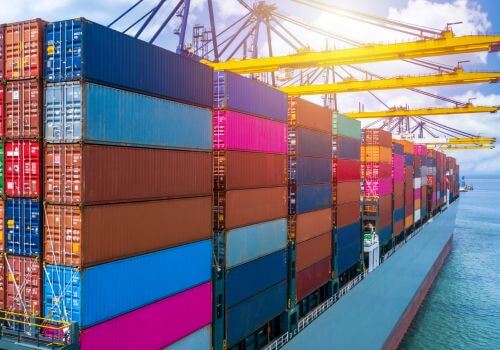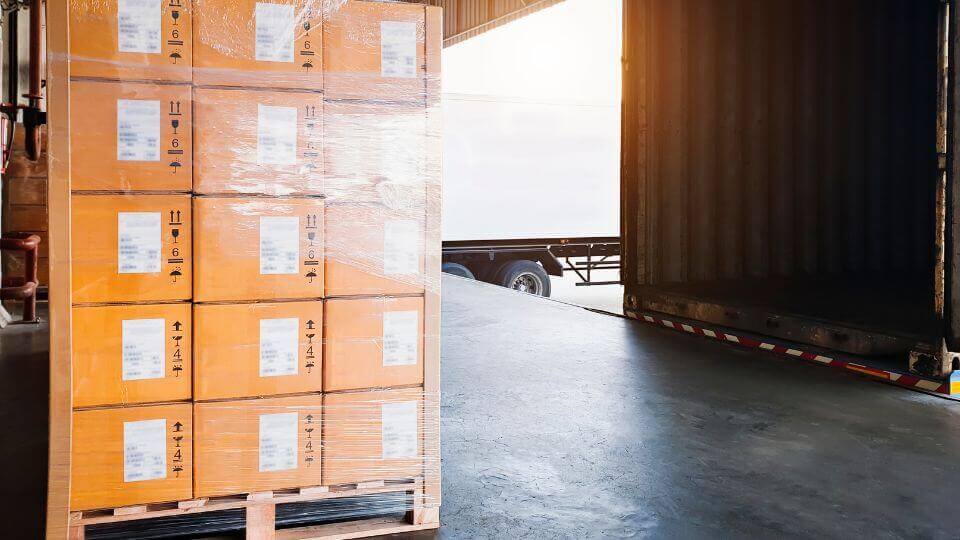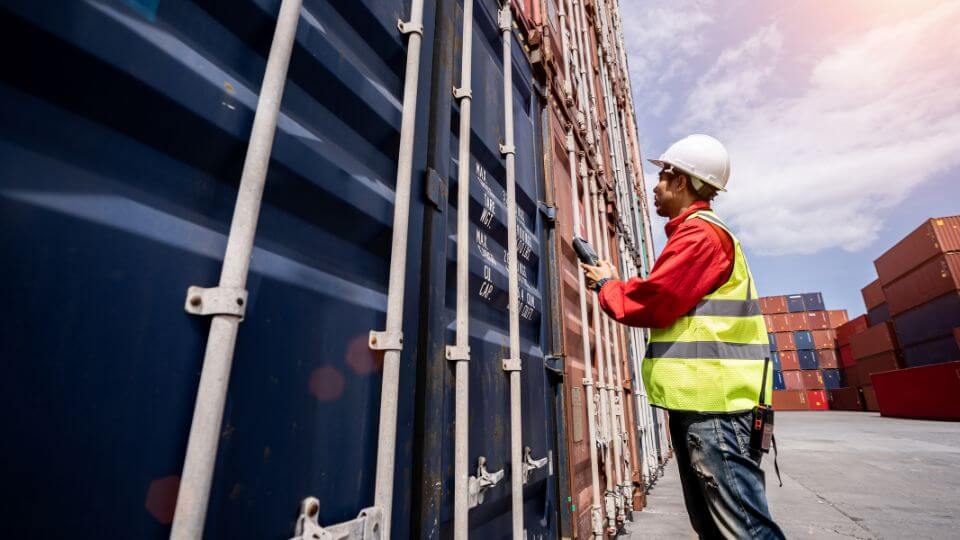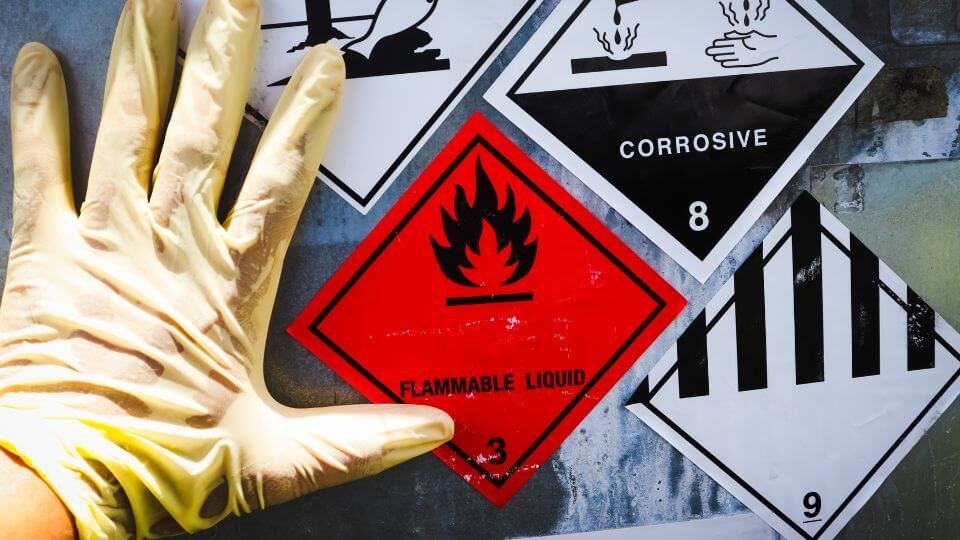In the complex landscape of logistics, ensuring the safe transportation and handling of goods is paramount. Hazardous materials present a unique set of challenges, requiring meticulous attention to detail and adherence to stringent safety protocols. From corrosive chemicals to radioactive substances, the logistics industry encounters a wide range of hazardous materials, HAZMAT in short, on a daily basis. Understanding the characteristics, risks, and best practices associated with these materials is essential for safeguarding personnel, protecting the environment, and maintaining the integrity of supply chains.
In this blog, we will take a look into the properties, risks, and proper handling procedures for 10 common hazardous materials encountered in the modern logistics industry.
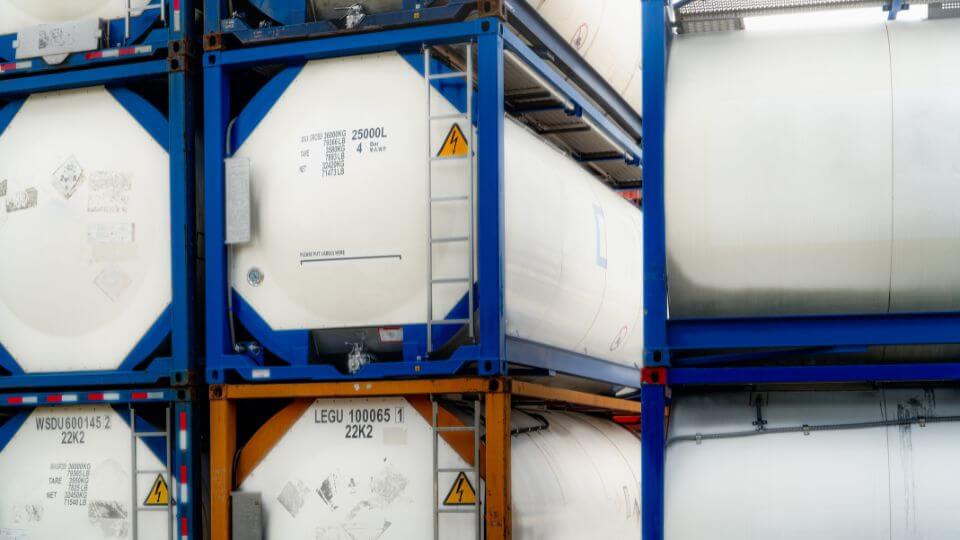
1.
Flammable Liquids

Flammable liquids, including gasoline, ethanol, and various solvents, are commonly present in most of the logistics operations. These substances are characterized by their low flash points and high volatility, making them prone to ignition and combustion under certain conditions. The primary risk associated with flammable liquids is the potential for fires or explosions during transportation, storage, and handling.
To mitigate these risks, logistics professionals must implement robust safety measures, including proper containment, labeling, and storage practices. Additionally, personnel involved in handling flammable liquids should receive specialized training in fire prevention, spill response, and emergency evacuation procedures. Regular inspections of storage facilities and transportation vehicles are also essential to identify and address potential hazards before they escalate.
Common HAZMATs include:
- Gasoline
- Diesel
- Ethanol
- Aviation fuel
- Kerosene
- Jet fuel
- Motor oil
2.
Corrosive Chemicals
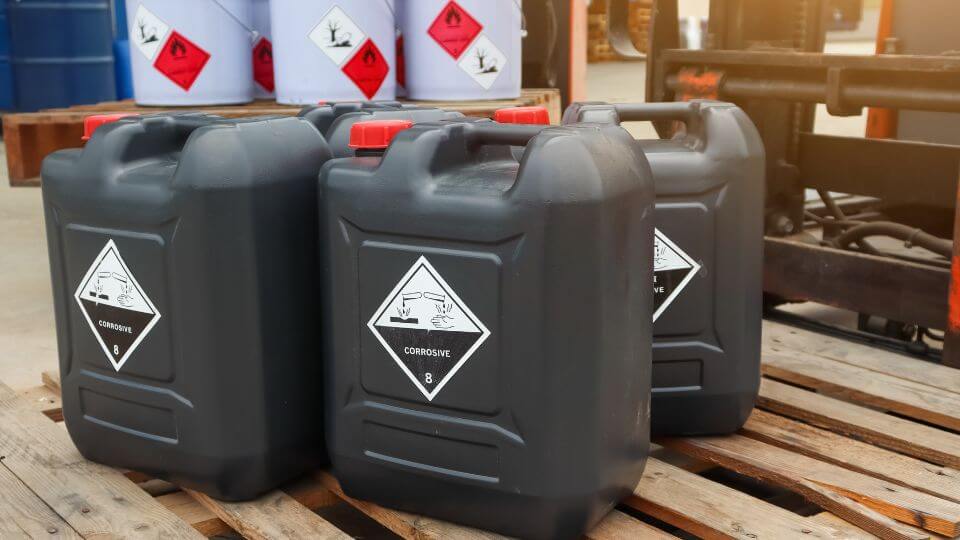
Corrosive chemicals, such as sulfuric acid, hydrochloric acid, and caustic soda, pose significant risks due to their ability to cause severe damage upon contact with living tissue or certain materials. These substances are corrosive in nature, capable of corroding metals, causing burns, or damaging equipment and infrastructure. The primary concern when handling corrosive chemicals is the risk of chemical burns, inhalation of toxic fumes, or environmental contamination in the event of spills or leaks.
Proper handling of corrosive chemicals requires adherence to strict safety protocols, including the use of appropriate personal protective equipment (PPE), such as gloves, goggles, and respiratory protection. Additionally, logistics companies must implement effective engineering controls, such as secondary containment systems and ventilation measures, to minimize the risk of exposure and environmental damage. Regular training and safety audits are essential to ensure compliance with regulatory requirements and promote a culture of safety among personnel.
Common HAZMATs include:
- Sulfuric acid
- Hydrochloric acid
- Caustic soda (sodium hydroxide)
- Nitric acid
- Phosphoric acid
- Ammonia solution
- Sodium hypochlorite
3.
Toxic Substances

Toxic substances encompass a wide range of materials, including pesticides, industrial chemicals, and certain pharmaceuticals, that pose significant risks to human health and the environment. Exposure to toxic substances can result in acute poisoning, chronic health effects, or environmental contamination, making proper handling and disposal essential to prevent adverse outcomes.
Logistics companies must adhere to strict regulations governing the transportation and disposal of toxic substances, including proper labeling, packaging, and documentation requirements. Personnel involved in handling toxic substances should receive specialized training in hazard communication, spill response, and emergency evacuation procedures to mitigate the risk of exposure. Furthermore, effective risk assessment and management strategies, such as conducting site-specific hazard evaluations and implementing engineering controls, are essential to minimize the potential impact of incidents involving toxic substances.
Common HAZMATs include:
- Pesticides (e.g., insecticides, herbicides)
- Industrial chemicals (e.g., formaldehyde, benzene)
- Hazardous pharmaceuticals (e.g., chemotherapy drugs, certain antibiotics)
- Battery acid (sulfuric acid)
- Cleaning chemicals (e.g., bleach, ammonia)
- Automotive chemicals (e.g., antifreeze, brake fluid)
4.
Explosives

Explosives, such as fireworks, ammunition, and industrial blasting agents, present unique challenges in logistics due to their inherent volatility and potential for catastrophic accidents. Mishandling or improper storage of explosives can result in accidental detonation, fires, or explosions, posing significant risks to personnel and property.
To ensure the safe transportation and handling of explosives, logistics providers must adhere to strict regulatory requirements and industry standards governing the packaging, labeling, and storage of these materials. Personnel involved in handling explosives should receive specialized training in explosive safety, security procedures, and emergency response protocols to mitigate the risk of accidents. Additionally, implementing robust security measures, such as access controls and surveillance systems, is essential to prevent unauthorized access or tampering with explosive materials.
Common HAZMATs include:
- Fireworks
- Ammunition (e.g., bullets, shells)
- Detonators
- Dynamite
- Flares
- Pyrotechnics for special effects
5.
Radioactive Materials

Radioactive materials, used in various industries for medical, industrial, and research purposes, present unique hazards due to their ability to emit ionizing radiation and pose risks to human health and the environment. The transportation and handling of radioactive materials require adherence to strict regulatory requirements and specialized safety precautions to minimize radiation exposure and prevent contamination.
Logistics companies involved in transporting radioactive materials must comply with international regulations, such as those outlined by the International Atomic Energy Agency (IAEA) and national authorities, governing the packaging, labeling, and transportation of radioactive substances. Specialized packaging, shielding, and handling procedures are necessary to minimize radiation exposure during transportation and storage. Additionally, personnel involved in handling radioactive materials should receive specialized training in radiation safety, contamination control, and emergency response procedures to mitigate the risk of accidents and ensure compliance with regulatory requirements.
Common HAZMATs include:
- Industrial radiography sources
- Radioactive pharmaceuticals
- Radioactive isotopes used in medical devices
- Nuclear fuel rods
6.
Compressed Gases

Compressed gases, such as oxygen, nitrogen, and carbon dioxide, are commonly used in various industries but pose hazards related to pressure buildup, flammability, and toxicity. Improper handling or storage of compressed gases can result in leaks, ruptures, or explosions, posing significant risks to personnel and property.
To ensure the safe handling and transportation of compressed gases, logistics providers must adhere to strict safety protocols and regulatory requirements governing the packaging, labeling, and storage of these materials. Proper inspection, maintenance, and testing of gas cylinders and storage facilities are essential to identify and address potential hazards before they escalate. Personnel involved in handling compressed gases should receive specialized training in gas safety, cylinder handling, and emergency response procedures to mitigate the risk of accidents and ensure compliance with regulatory requirements.
Common HAZMATs include:
- Oxygen
- Nitrogen
- Carbon dioxide
- Propane
- Compressed air
- Refrigerant gases
7.
Infectious Substances

Infectious substances, including biological samples, medical waste, and certain pathogens, present unique hazards due to their potential to cause disease transmission and public health risks. The transportation and handling of infectious substances require adherence to strict biosecurity measures and specialized safety precautions to prevent exposure and contamination.
Logistics companies involved in transporting infectious substances must comply with regulatory requirements governing the packaging, labeling, and transportation of these materials, including proper containment and disinfection procedures. Personnel involved in handling infectious substances should receive specialized training in biosecurity measures, personal protective equipment (PPE) use, and infection control procedures to minimize the risk of exposure and prevent the spread of infectious diseases. Additionally, implementing strict hygiene protocols, such as handwashing and decontamination procedures, is essential to prevent cross-contamination and ensure compliance with regulatory requirements.
Common HAZMATs include:
- Biological samples
- Medical waste
- Laboratory cultures and stocks of infectious agents
8.
Oxidizing Agents

Oxidizing agents, such as hydrogen peroxide, chlorine, and potassium permanganate, pose hazards related to their ability to facilitate combustion and support the spread of fires. Improper handling or storage of oxidizing agents can result in chemical reactions, releases of toxic gases, or even explosions, posing significant risks to personnel and property.
To ensure the safe handling and transportation of oxidizing agents, logistics providers must adhere to strict safety protocols and regulatory requirements governing the packaging, labeling, and storage of these materials. Proper segregation from flammable materials and incompatible substances is essential to minimize the risk of chemical reactions and accidents. Personnel involved in handling oxidizing agents should receive specialized training in chemical safety, hazard communication, and emergency response procedures to mitigate the risk of accidents and ensure compliance with regulatory requirements.
Common HAZMATs include:
- Hydrogen peroxide
- Chlorine
- Potassium permanganate
- Sodium chlorate
9.
Hazardous Waste

Hazardous waste, generated from industrial processes, manufacturing operations, and healthcare facilities, poses significant risks to human health and the environment if not managed properly. The transportation and disposal of hazardous waste require adherence to strict regulatory requirements and specialized safety precautions to prevent environmental contamination and public health hazards.
Logistics companies involved in transporting hazardous waste must comply with regulatory frameworks governing waste classification, manifesting, and tracking procedures. This includes the implementation of robust packaging and labeling practices, as well as the provision of specialized equipment and training for personnel involved in handling hazardous waste. Furthermore, effective communication and collaboration with waste generators, disposal facilities, and regulatory authorities are essential to ensure compliance with best practices and minimize the potential impact of incidents involving hazardous waste.
Common HAZMATs include:
- Chemical waste (e.g., spent solvents, laboratory chemicals)
- Industrial waste (e.g., heavy metal sludge, manufacturing byproducts)
- Healthcare waste (e.g., infectious waste, pharmaceutical waste)
- Electronic waste (e.g., batteries, electronic components)
10.
Reactive Chemicals

Reactive chemicals, such as peroxides and cyanides, present unique hazards due to their potential to undergo spontaneous reactions, release toxic gases, or generate heat. Improper storage or handling of reactive chemicals can lead to chemical reactions, releases of toxic vapors, or even explosions, posing significant risks to personnel and property.
To mitigate these risks, logistics providers must adhere to stringent safety protocols governing the handling, storage, and transportation of reactive chemicals. This includes proper segregation from incompatible materials, as well as the implementation of rigorous training programs for personnel tasked with handling these materials. Regular checks and communication with suppliers ensure compliance and safety.
Common HAZMATs include:
- Peroxides (e.g., benzoyl peroxide)
- Cyanides
- Azides
- Peroxyacids
- Sulfuric acid and organic materials
Conclusion
Handling hazardous materials in logistics requires meticulous attention to detail and adherence to stringent safety protocols. By understanding the risks associated with each material and implementing best practices, logistics companies can protect personnel, the environment, and supply chains. Through proper training, compliance with regulations, and effective communication and collaboration with stakeholders, logistics professionals can navigate the challenges posed by hazardous materials and ensure the safe and secure transportation and handling of goods.
By prioritizing safety and adhering to best practices, the logistics industry can continue to play a vital role in global commerce while minimizing the potential impact of hazardous materials on human health and the environment.






